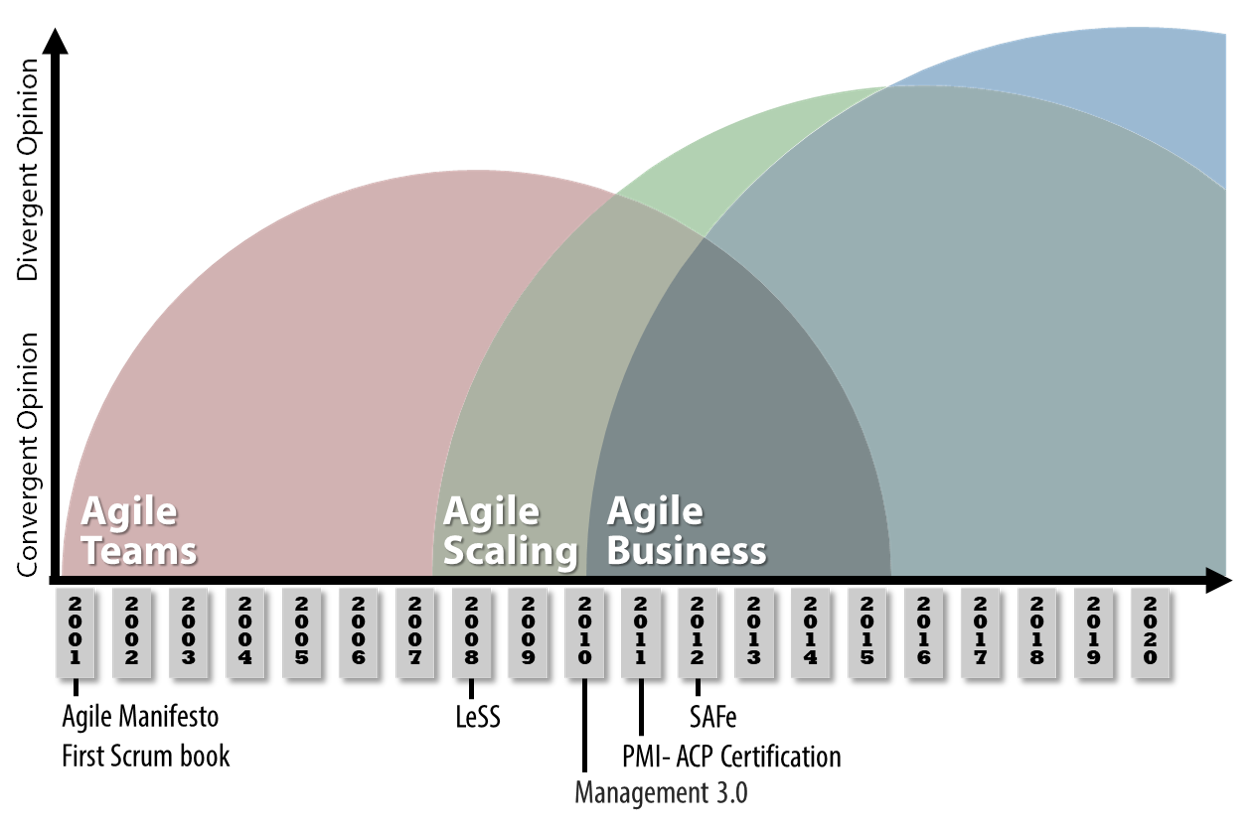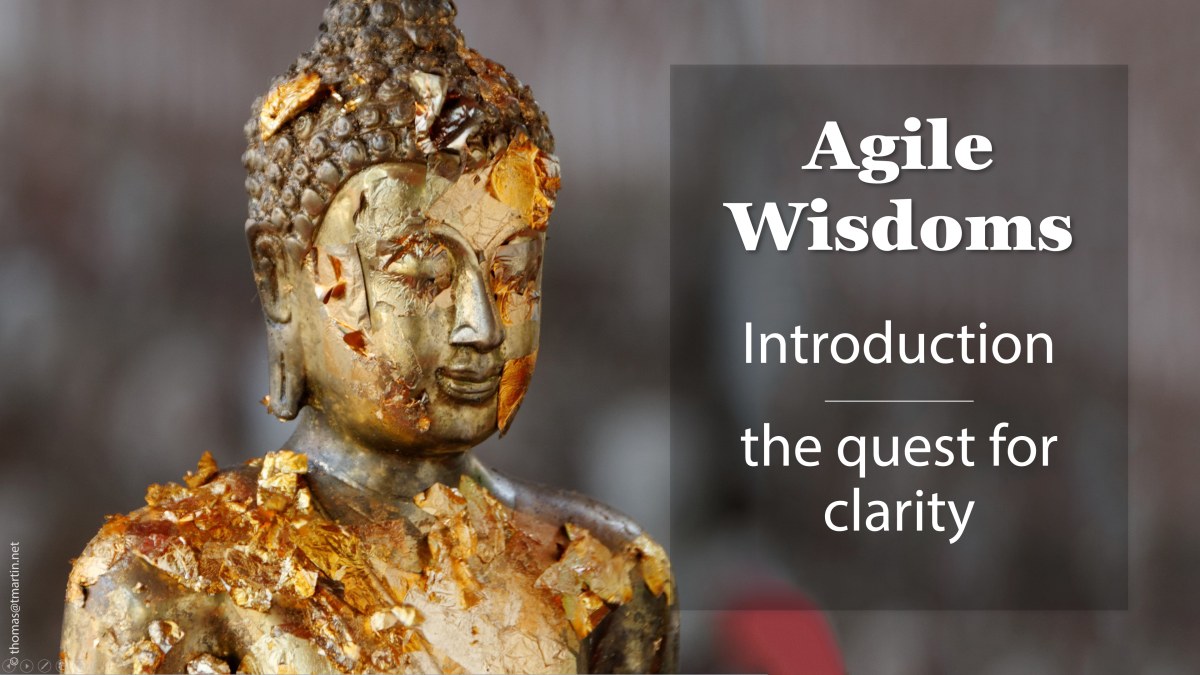Historically, we have observed three waves of agile: agile teams, agile scaling and agile business.

With each wave, opinion diverges more, and the amount of uncertainty increases due to the broader scope.
As agile ways of working spread, two things happen. Firstly, they face reluctance. “This will not work here!” “Agile is only for software.”, “Why do we need to change?”. Secondly, existing practices need to change, and new ones need to be developed. The evolution of the agile movement from software development projects to business agility requires constant innovation. Only one thing seems to be certain: uncertainty.
Agile infighting in search of perfection
The agile community is also not always helping. It seems to diverge in a battle of frameworks, torn in a war of Agile Mindset vs.Practices, Being vs Doing Agile or Shu, Ha, or Ri. The many voices rarely chime into a beautiful tune but instead create an increasingly loud background noise that can be distracting. The discussions are vital for the community. But they can be confusing for by-standers looking for clear answers.
The new old kids on the block in search of the money
As agile enters the mainstream, the big shots take note. Large consultancies like McKinsey, BCG and Accenture are jumping on the bandwaggon and marry the new stuff with their old prescriptive approaches to protect their profitable growth trajectories. In the extreme, they flood the market with young, inexperienced ‘agile consultants’ that are mass-produced in certification courses to reproduce simplistic cookie-cutter approaches to achieving agility.
Ultimately, clients are confused whether they should trust their old advisors that package agile with the traditional approaches that are so comfortably familiar or should they rather trust the individual, grey-haired agile veteran who propagates the need for a fundamental mind shift.
In search of the middle ground
I know both camps. I made my career in consultancies and see benefits in providing continuity from the old to the new ways of working. Only if we make it easy to understand and do we will reach as many people as possible.
But I have also grown some agile grey hair and lost even more. From my many years of learning about agility, I realize that it takes time to gain a deep understanding of the powerful new concepts to enable a successful and sustainable agile business transformation.
So we are searching for the middle ground where truth is “as simple as possible but not simpler” as Albert Einstein said.
This middle ground exists. My search for agile truths not only uncovered seemingly endless learning opportunity but also some nuggets of wisdom.
Despite all the uncertainty and novelty, the now 20-years-old agile movement has produced some clarity that provides guidance.
Those nuggets serve as firm goal posts that direct agile journeys and help leaders to navigate the vast and uncharted territory of business agility.
In this series, I would like to share some of those agile wisdoms that I have discovered.
Caveat: goalposts can move
I realize that I might be wrong. What seems right for me at this moment may not be right for others or may not stand the test of time. I want to try anyway.
I want to be clear to provide clarity. Taking a clear position will also allow others to rub against it. Please do!
This series is not only a contribution to clarity but also to the ongoing discussion in the agile community about what is right and what is not. So we all can serve better.
The Agile Wisdoms series articulates truths about agile ways of working to guide agile transformations. It aims at providing clarity from the subjective perspective of the author to contribute to the ongoing discussion in the agile community.
Please comment or contact me at thomas[dot]martin[at]mybusinessagility[dot]com
You can find all agile wisdoms at www.mybusinessagility.com/agilewisdoms

